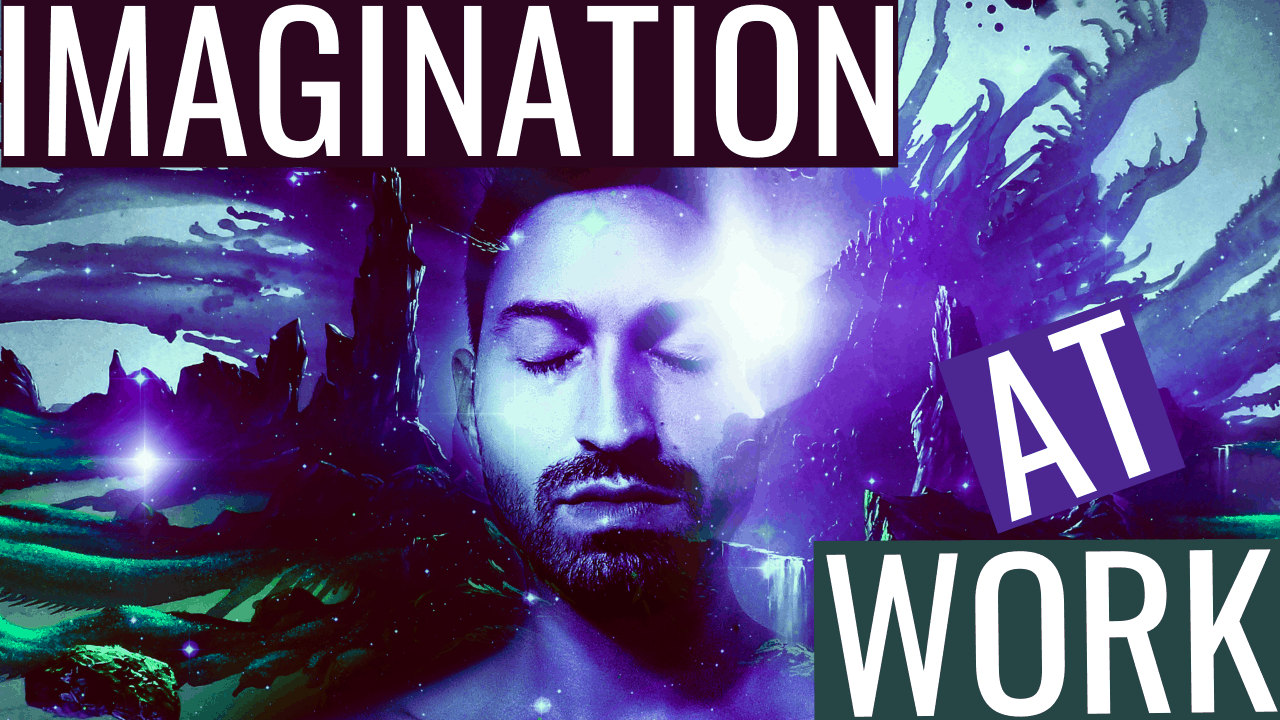There’s an old Chinese saying ‘may you live in interesting times’. When someone said that to you, it was seen as both a blessing and a curse because to live in interesting times means to deal with danger and opportunity, to embrace simultaneous breakdown and breakthrough. Despite horrific daily headlines reinforcing our collective psychological trauma, the important news is that we are living in the golden age of imagination. The way we relate to ourselves, each other and the world around us is metamorphosising right in front of our very eyes.
Modern scientific disciplines, over the past four decades, have been preoccupied with the way these concepts, values, and practices shape how we see ourselves in the world and the stories we tell ourselves. If these stories are taken for granted and never questioned, they tend to loop – replaying over and over again. The social and scientific revolutions across the ages have left their legacies with the modern mind and ultimately the ‘stories’ it unwittingly defaults to.
During the Renaissance and the Enlightenment period, we saw major revelations in scientific discovery and philosophy from greats such as Copernicus, Galileo, Newton, Descartes, and Darwin. Their theories greatly influenced the modern western view of humanity in the environment and wider cosmos. Humans became external actors, disconnected from the very fabric of nature and living systems to which we had previously been a part of. Interestingly these events were both profoundly liberating for society, and also enormously disenchanting.
Other major transformations through rapid industrialisation and urbanisation continued to reinforce a sense of separation between society and nature, human and non-human worlds, lived-in lands, and pristine wilderness. It is arguably this sense of separation that has enabled society to capitalise on the fruits of science, industry, and global economics. Conversely, it is also what underwrites the parallel dysfunction and destruction of our social and ecological systems. The ecological, social, and economic crisis now upon us is as much a crisis of spirit as it is a crisis of resources. Modern society and industry tend to perceive the Earth and its inhabitants as a set of resources and assign each a set value.
“A paradigm can be thought of as a constellation of concepts, values, perceptions and practices shared by a community, which forms a particular vision of reality.”
– Fritjof Capra
Society's Flawed Logic
Increasingly we are questioning what an overly mechanistic and reductive logic obscures from view and how it conditions and limits our knowledge. Other knowledge of Nature exists outside of modern western philosophy, such as holistic science and practices by traditional cultures that are also valid. Advances in science have allowed humans to manipulate, manage, interpret, document, and literally create life with technology (synthetic biology). Science in its mechanistic form has revealed an ecological crisis, but the question of whether it is wholly equipped to reverse this crisis is doubtful.
Albert Einstein warned us that “We cannot solve our problems with the same thinking we used when we created them.” The solutions we crave are social, cultural, and economic, not just technical. This perspective doesn’t propose to undo science, yet asks that it is reflective of its own limits. It is equally crucial to pose challenges such as ‘how far,’ ‘how fast’; ‘which way’, ‘who says’ and ‘why’, oh yes and ‘who’s getting paid’; not a question of balancing a ‘pro’ and ‘anti’ position. The same reflexivity is just as important in the business world since what is required is a radically new way of doing business – one that honours and values intrinsically (rather than just financially) the global nexus of social and ecological systems. This is only one factor within a much wider transition in the collective consciousness.
There are many profound questions facing us. While many new digital technologies are amazing, alone technology doesn’t make much difference. We have learned over the last two decades that few benefits ensue from the new technologies unless there is also a different mindset towards managing – human beings creating value for other human beings. It is a new meta-model of management that is fundamentally different from industrial-era management, which was based on efficiency and outputs. Our understanding of how life works is undergoing a transformation. And with it, so is our understanding of how organisations find resilience in times of volatility.
I believe in the power of the imagination to remake the world, to release the truth within us, to hold back the night, to transcend death, to charm motorways, to ingratiate ourselves with birds, to enlist the confidences of madmen.”
― J.G. Ballard
The Wisdom of Nature
Nature’s principles applied to business are: resilience, optimising, adaptive, systems-based, values-led, and life-supporting. Integrating these principles into our organisations enables us to succeed in the future of work. Underpinning these ‘ways of doing’ is an underlying strategic and operational intent, a leadership mindset that creates the nutritious soil and safe space for team dynamics and ways of working to come alive. To cultivate this nutritious cultural soil, we need an approach to leadership that is quite different from the traditional leadership development and managerial approaches many of us have been trained and practiced in: A ‘new normal’ of leadership.
The most fundamental shift facing our leaders and managers today is a shift in our way of being, knowing and thinking – a shift in consciousness no less. New horizons are created through new ways of thinking, perceiving and attending to ourselves, each other and wider environment. It is up to the individuals within our organisations to imagine and co-create a new logic. This shift in logic is the biggest challenge facing organisational management and leadership today. Without this radical shift in thinking we will be unable to transform successfully towards a regenerative future.
“Children see magic because they look for it.”
― Christopher Moore
Interacting with Reality
A shift in consciousness means a shift in perception, in prehension, in our relationality with reality. And we can break down this relationality with reality into three interweaving component parts:
1. The Self
Our relationship with ourselves – our self-awareness, our ability to see our own habits, patterns, constrictions, beliefs and blind spots, and our way beyond them.
2. The Other
Our relationship with others – our ability to allow deep sociality and empathy, or to get caught up in heightened ego-accentuation, projection, control, fear, and polarisation.
3. The World
Our relationship with the world – our ability to sense into the deep interrelating, participatory magnificence of life, or to narrow-down through anthropocentric and materialistic lenses.
It’s this relationality, this awareness, that is at the heart of our challenges today. Yet, so often while trying to find solutions to our ever-deepening and widening social, economic, and environmental problems, we apply the very same level of consciousness that created the problems in the first place. We simply don’t have time for this anymore. This is our hour of reckoning, and we need to get radical to deal with the root cause: our flawed worldview. The neurosis of the human mind, a pathology of our psychology, a psychosomatic disease of epic proportions which is undermining our relationship with ourselves (where we are unable to become who we truly are as human beings); undermining our relationship with others (where we get caught up in a society of hyper-competition, consumerism, and individualism); undermining our relationship with the world (where we end up unweaving the very fabric of life upon which we depend, burning the book of life before we have even read it).
“Imagination will often carry us to worlds that never were, but without it we go nowhere.”
― Carl Sagan
Enter the Mind's Playground
When we use our imagination, consciousness opens up to the magnificence of existence. We begin to open up to a deeper sense of place and purpose in the world, we gain our ‘desire to see it (evolution) continue to be’. It is this opening up to the relationality of reality that expands our heart/mind/will in a way that changes our orientation. We realise how life truly is, and in-so-doing seek to serve life, not to merely exploit it for our own human betterment. Using our imagination:
1. Ignites Passion
As adults we have been forced into a world of responsibility and practicality where bills, chores and jobs (many of which we hate) dictate how we live, breathe, and experience the world. Dreaming of what can be allows us to tap into the possibilities, reminding us what it feels like to be passionate about something. Somewhere along the lines we have lost that connection to passion and purpose in life and replaced it with survival and responsibility.
2. Creates the Future
Thoughts become things and our imaginative muscle is the very thing that helps make that possible. When we stay immersed in what is directly in front of us at all times (i.e. our current reality), we continually create the same challenges, problems, and experiences over and over again. When we venture into our imagination to focus on the reality that we want to experience, the energy is set in motion and magnificent change can occur.
3. Stimulates Creativity and Innovation
Some of the most influential and innovative creations have come from the simple act of imagining something bigger, easier, or more beautiful. Scientists and creative artists have an amazing gift for thinking outside the box and allowing their imaginations the freedom to grow and evolve their thoughts, many of which have created products that have changed the way we live entirely. Imagination is the key ingredient to the expansion and advancement of our world.
“Reason is intelligence taking exercise. Imagination is intelligence with an erection.”
― Victor Hugo
Inspired by Nature
In drawing inspiration from Nature, we step beyond our narrowed-down view of life and recognise the intrinsic patterns and reciprocal relationships in our midst. These patterns can often seem confusing or complex for our reductionist mind, yet for our intuitive logic they are quite natural. Such patterns and flows are, by their nature, regenerative and sustainable. In applying this inherent logic of life, we no longer need to superficially bolt on sustainability initiatives to unsustainable modus operandi. In going with the flow of Nature, we redesign for resilience, ensuing sustainability – in all sense of the word – is ingrained in how we operate and innovate.
“Fantasy was always only a reality waiting to be switched on.”
― Joe Hill
3 Ways to Rewire Your Brain for Innovation
You may heard that right-brain dominant people are more creative. Unfortunately this is a fallacy. The truth is that creativity draws from multiple brain regions, including both hemispheres of the cortex as well as deeper brain structures, for imagination to function at its optimal potential. The ideal is not to be right-brained or left-brained dominant, but rather to be whole-brained and to have healthy interconnectivity and communication happening between the various brain regions. The brain is subject to remolding throughout life due to a phenomenon called neuroplasticity. This opportunity to rewire the brain is an important aspect of our ability to further develop our creative capacity and become more consciously aware. Training the mind and rewiring the brain to be able to access more imagination is an essential step we must take to amp up our performance and innovative abilities.
1. Stimulate
In order to rewire, we must stimulate the brain with novel patterns, experiences, and concepts. When you commit to seeing things with fresh eyes or engaging in new activities each day, even when they are small things (like holding your toothbrush in the other hand) this supports healthy neural activity and new connections.
2. Repeat
Neurons wire more strongly according to repeated patterns. When it gets to the point where you no longer have to think about each step, or apply much will power to undertake a task, and instead things just flow, that is when you know you have successfully wired in the new pattern.
3. Rest
Finally, it is important to balance out activity and novelty with sufficient rest and downtime. Most creative breakthroughs happen not while in intense concentration, but rather during downtimes, when we allow the mind to wander or rest. By cultivating a lifestyle that balances activity with rest time, you will be well on your way to thriving in life and feeling like you have plenty of energy and creative juice for the tasks at hand, rather than feeling stressed or overwhelmed.
“Adults are bad at remembering how powerful they can be because somewhere along the line, they were shamed for their imagination.”
― Stephen Chbosky
The Mechanics of Imagination
Every organisation now needs to be able to reimagine itself repeatedly if it is to prosper in the long run. While much has been written about innovation and business models, we don’t really have a playbook for what lies upstream of innovation: imagination. We need imagination now more than ever to find new opportunities, rethink our businesses, and discover paths to growth. Yet many companies have lost their ability to imagine. How can organisations keep imagination alive and harness it in a systematic way?
Imagination is one of the least understood but most crucial ingredients of business success. It’s what makes the difference between an incremental change and the kinds of paradigm shifts that change the game for everyone – especially during a crisis. In the book The Imagination Machine, Martin Reeves and Jack Fuller provide a fascinating look into the mechanics of imagination and lay out a six-step process for creating ideas and bringing them to life, each with different requirements and pitfalls:
Stage One: The Seduction
How to open yourself up to surprises. Create encounters with surprise, which inspire us to revise our mental model of how a business works.
Stage Two: The Idea
How to generate new ideas. Develop tentative ideas into detailed, coherent, testable mental models to create a culture that doesn’t immediately dismiss embryonic ideas.
Stage Three: The Collision
How to rethink your idea based on real-world feedback. Collide new models with reality, and to do this long before you would normally run a well-structured pilot.
Stage Four: The Epidemic
How to spread an evolving idea to others. Ensure that ideas spread to other minds, to drive their continued evolution and adoption. Inspire company-wide events for sharing imaginative ideas at all stages of development – effectively super-spreader events for new ideas.
Stage Five: The New Ordinary
How to turn your novel idea into an accepted reality. Scale and codify mental models to shape a new reality, turning unprecedented and counter-intuitive ideas into something successful that is, normal and unremarkable.
Stage Six: The Encore
How to repeat the process – again and again. Maintain the tension between imagination and execution across a business and over time, reworking old ideas while also creating the new ones which eventually disrupt and replace them.
“Imperfection inspires invention, imagination, creativity. It stimulates. The more I feel imperfect, the more I feel alive.”
― Jhumpa Lahiri
Imaginative Leaders
Leaders play a huge role in setting the right context for imagination. They can focus the organisation on the outside world where the most surprises originate, countering the tendency to become more and more introverted as they grow. For instance, Nitin Paranjpe, COO of Unilever, sent the entire company out into the field for one day. “Every single person, from me to the receptionist at the front desk – everyone – had to go out and talk to customers… Everyone was required to come back and share: What did you hear? What surprised you? What new ideas came up? And what should we do about it?”
Leaders can also create a sense of urgency by focusing attention on signals that yesterday’s success may not last forever. In this way they counter the false sense of security and complacency which backward looking financial metrics can create. Business leaders can create cultures that allow time for reflection and to ponder what-if questions to see if they are legitimate, rather than immediately shooting them down as being impractical, distracting or fanciful. They can make sure the maverick personalities who create new ways of looking at the business, are recognised and rewarded as well.
“One does not become enlightened by imagining figures of light, but by making the darkness conscious. The latter procedure, however, is disagreeable and therefore not popular.”
― C.G. Jung
6 Blind Spots to Your Brilliant Imagination
Reimagination has effectively become the new execution. It must be embraced as a competitive necessity and an opportunity to rehumanise organisations so they can attract and motivate the talent they need to continually discover new ways to succeed. Imagination helps us see new possibilities for the future, navigate in times of uncertainty, and spark new ideas. It has been more than 85 years since Albert Einstein said, “Imagination is more important than knowledge. For knowledge is limited to all we now know and understand, while imagination embraces the entire world, and all there ever will be to know and understand.” Despite the passage of time, this statement is arguably even more accurate today. We need to be dreaming up things that are beyond what we know or think could be possible. We simply are not using our imaginations enough. Imagination is not the domain of any one person, or any one sector. Everyone has an imagination and the more that we encourage people to use their imagination, the more everyone benefits. Essentially, we have to get out of the way and ditch reactions like ‘that’s not how we do things,’ or ‘that’s never going to succeed. Here are some key ideas to help you find your own blind spots:
1. Everything and everybody is a work in progress.
Nothing is a static fixed reality. As soon as you see everything as a work in progress, you begin to realise that you have contributions that you can make toward improving reality.
2. Imagination is a sandbox.
Achieving your goal, in whatever new ways you conceive, is the desired outcome when it comes to applied imagination.
3. Check Yourself
As soon as you think you’re an expert, ask yourself what are you an expert in. As technology and other forces disrupt our society, we’re much more likely to trust someone who doesn’t know, but who is willing to find out, than someone who claims to have all the answers.
4. Take into Account Extrinsic Consequences
We are good at measuring the intrinsic characteristics of a decision, but not the extrinsic consequences. Imagination is required to understand complex extrinsic consequences.
5. Examine your own motivations
The first step to unlocking imagination is understanding what motivates you to take the next step.
6. Start Small
If laziness becomes commonplace in our society, it will be harder to drive change. Imagination fuels all grand visions that were once the tiny seed of an idea. The only way to make it real is by navigating the daily grind of reality with as much clarity as possible.
“The soul without imagination is what an observatory would be without a telescope.”
― Henry Ward Beecher
Use Your Imagination
With the vastly overwhelming amount of knowledge out there it might seem radical to point out an unfortunate truth. Knowledge is limited. There is a finite amount of knowledge out there that our limited minds can take in and assimilate. However, imagination is unlimited and we can freely use this powerful tool to explore the possibilities of how to utilise the knowledge at our disposal. We are in the midst of a metamorphosis, profound shifts are affecting the way we work, how and why we do things, and the purpose and meaning we bring to our organisations, our systems and our wider civilisation. The times upon us are here to wake us up, if we so choose.
Waking up is not easy, it can be painful and hard. Waking up requires us to transform the inner self, along with our mind-set and our worldview. The more conscious we become in allowing this shift in attentiveness, through our sense of presence and connection, in terms of how we are showing up in each evolving moment, the more we contribute to this metamorphosis, as we open up to the magnificence of existence. The more attention you give your imagination, the more it will serve you. Never underestimate the power of your imagination. It can restore balance and fuel the creation of something that will have a positive impact on humanity.
“The imagination of nature is far, far greater than the imagination of man.”
― Richard P. Feynman






